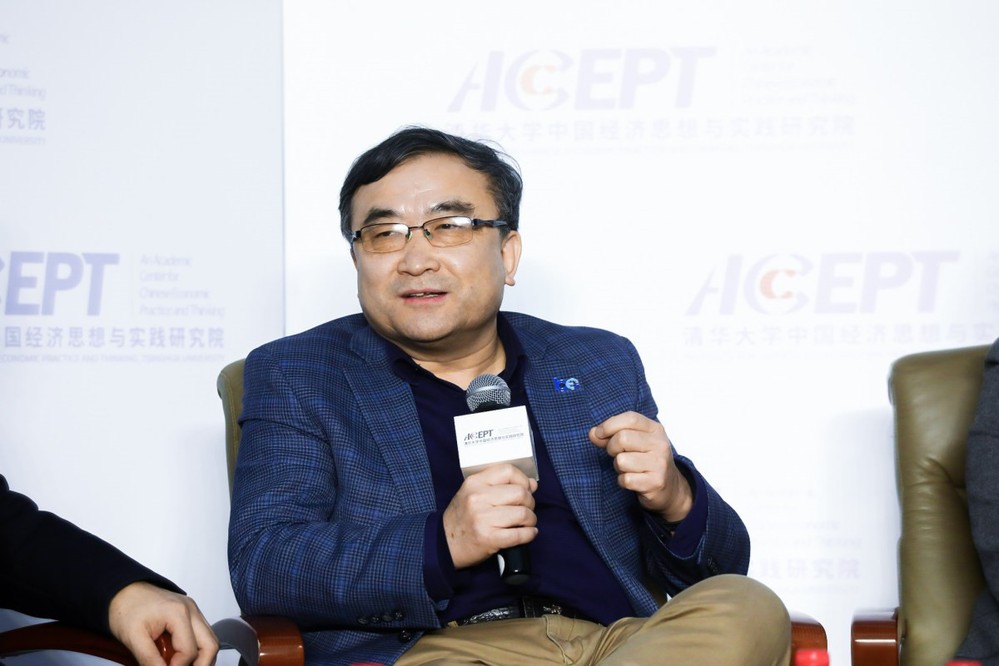Energy Foundation CEO Zou Ji: Green Development is a Huge Business Opportunity
Originally published in Chinese by ACCEPT on December 28, 2020, translated by ACCEPT.

As 2021 approaches, the outline of the 14th Five-Year Plan will be announced soon. During the implementation of the 14th Five-Year Plan and beyond, what are China’s prospects for growth and high-quality socioeconomic development?
On December 27, Tsinghua University’s Academic Center for Chinese Economic Practice and Thinking (ACCEPT) and Tencent Finance jointly held a live online broadcast to explore this question. The three-hour event was centered around the theme: The 14th Five Year Plan: A Fresh Start for China and the World.
At the forum, ACCEPT released their new report, Analysis and Forecast of China’s Macroeconomy. The report’s focus is on the beginning of the 14th Five-Year Plan period: reconfiguring economic geography to enhance domestic circulation and readjusting economic and trade relations to open up new space in the international economy.
Zou Ji, President and CEO of Energy Foundation China, elaborated on energy-related issues such as carbon reduction and emission control in his remarks at the forum.
On the topic of providing adequate heating to residents in the winter months, Zou Ji said that judging from China’s current macroeconomic structure, there are 400 million people in the middle-income group. As a result of their income level, these individuals should have no problems gaining access to heating services and ensuring a comfortable temperature. On the other hand, from a technical and policy perspective of infrastructure for the supply of heating and public services, central cities and provincial capitals may be faced with insufficient power when southern China and the Yangtze River Basin encounter cold waves.
Next, Zou Ji addressed the issue of emission control. He argued that prior to the United Nations Framework Convention on Climate Change (UNFCCC), China’s right to development was closely linked with people’s right to a comfortable temperature as well as the country’s growth rate, carbon emissions, and pollution levels. Beginning in 2012, the government enacted the Eight Measures of Resolving Air Pollution, and has advocated for the implementation of relevant policies for nearly a decade to restore China’s clean air. This endeavor is related to the main drivers of growth, policy agenda, and growth pattern of China’s economic development in this moment. From the beginning of reform and opening up until roughly about 2011 or 2012, China was dependent on massive amounts of resource inputs, including labor, land, and environmental indicators, to support the country’s on-average double-digit growth.
According to Zou Ji, firstly, China can no longer go down the path of environmental pollution to achieve growth, as the country has already passed this developmental stage. Second, green development is a huge business opportunity. Here, we must consider the following two facts: 1) China’s per capita energy consumption is far lower than that of many developed countries, and 2) Green development implies costs that are higher than the costs of unconstrained investment and subject to faster growth.
“Is the international community aware of the cost behind China’s commitment in this regard? Have they given us enough recognition, and have they left us enough space to cooperate in trade and other areas? Does the international community know the efforts made by China in green development, and do we need to keep negotiating in other areas?” Professor David Daokui Li raised his questions during the roundtable session.
Regarding the cost behind China’s commitment, Zou Ji remarked that the international community is like a jungle, and thus it follows the law of the jungle. China can frankly communicate how high its costs are, “But only we are aware of our own costs, and only we can resolve them. Basically, we cannot rely on others to understand or give concessions.” On the one hand, China is the second-largest economy and the largest emitter of carbon dioxide. On the other hand, China is indeed faced with higher costs of carbon reduction. From a global perspective, India has a lower level of carbon emissions than China, and Chinese people pay the price for that. Countries around the globe are faced with all different levels of costs, but perhaps a more important question than the level of costs is the distribution of costs. In particular, China has a unique and huge advantage—that is, a large market and correspondingly massive economies of scale. If we can form an effective mechanism, we can dilute the costs.
Experience has also proven that once China enters a market, when given a policy channel, it can achieve economies of scale. Over the past decade, China has reduced its service costs by 60%, which is a unique achievement across the globe. For instance, in energy storage, China has rapidly reduced the costs of chemical energy storage in the past five years and has also formed its own specific resource endowments, particularly in the northwestern parts of China such as Qinghai, Gansu, Ningxia, and western Inner Mongolia where there are significant wind and solar resources. Previously there were numerous problems with consumption, but now the situation is changing. The relevant authorities are now discussing whether they can open up a few more channels to extend the coverage of photovoltaic and wind energy to the entire region. Such investment will not only help China build a low carbon economy, but will also address the issue of energy security.
Zou Ji concluded that the challenges we face as a globe certainly extend beyond the pandemic and climate change. “The danger of climate change and its severity are underestimated, not overestimated. We also face issues with plastic waste, ocean conservation, and space. Also, the financial risks are perhaps something that no one has considered, and that’s what we non-economists expect from economists,” Zou Ji implored.




